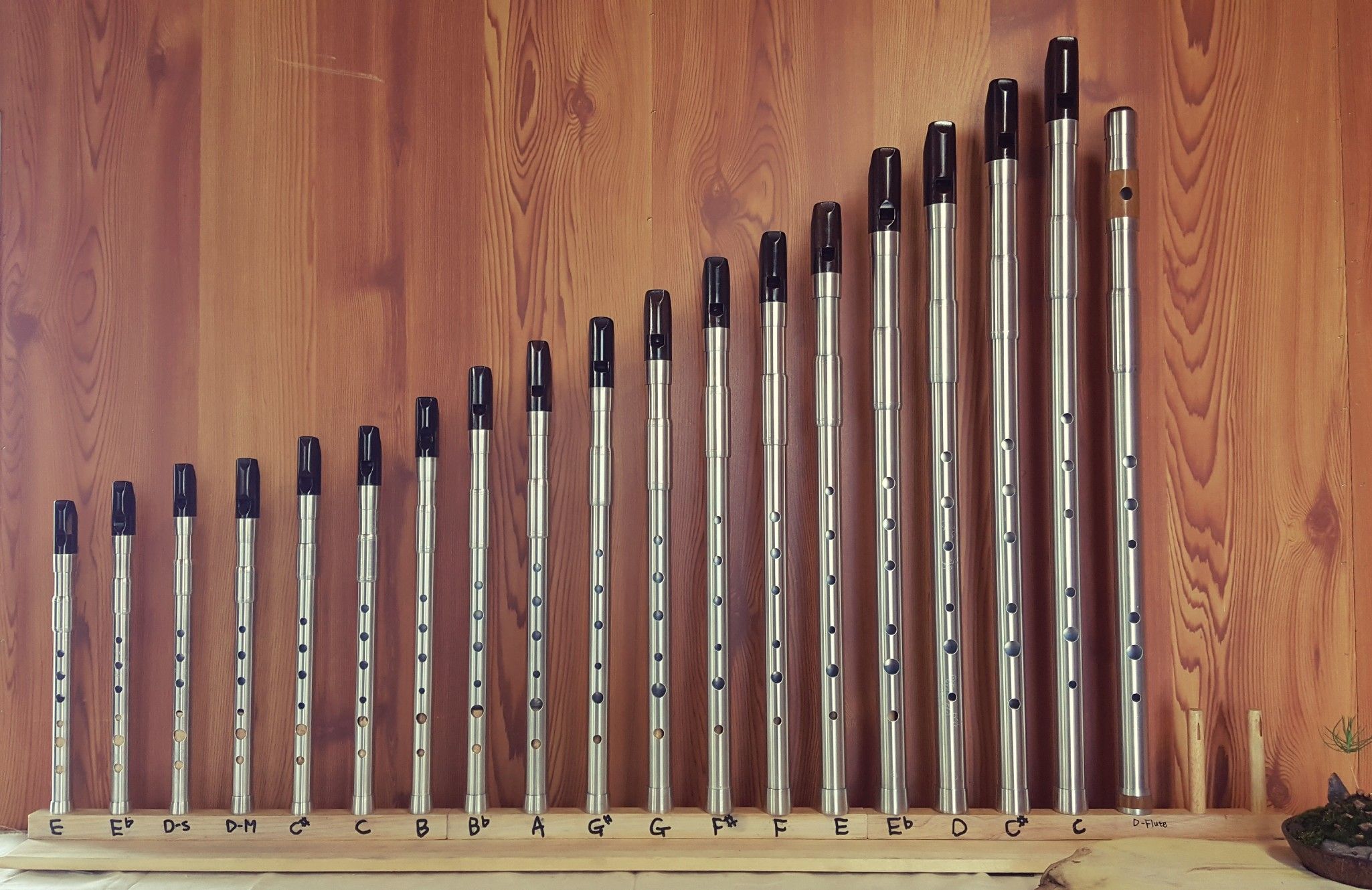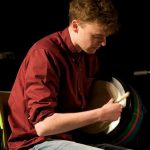
Whistles
Ita
Il flauto è sicuramente tra i più antichi strumenti che si conosca. Veniva suonato già tra i Sumeri, ed anche i primi abitanti della terra d’Irlanda lo suonavano circa nel 6000 a.c., sebbene con un numero piuttosto limitato di note in quanto questo strumento aveva solo 3 fori per le dita; era costituito di osso animale cavo aperto ad una estremità con un beccuccio in cui soffiare.
I whistles si dividono in Tin Whistle e Low Whistle.
Tin Whistles
Il “Tin whistle” (spesso abbreviato semplicemente come “Whistle”) si è evoluto dai precedenti flauti attorno al 1700 quando fu aggiunta una ottava in SI bemolle ed il suo nome deriva dal materiale utilizzato per la sua costruzione e cioè la latta; nell’800 si ebbe una ulteriore evoluzione grazie soprattutto all’avvento delle uilleann pipes e divenendo uno strumento molto popolare ed economico, tanto da conquistarsi il soprannome di “penny whistle” ovvero il whistle da un penny.
I suonatori più esperti si avvalgono di particolari tecniche (mutuate dalla cornamusa, dalle pastoral pipe e dalle uillean pipe) per arricchire l’esecuzione, come il vibrato o tremolo, cut, roll, crann, slide, tap.
Low Whistles
Questo flauto viene detto anche “Low whistle” per le note basse che è in grado di offrire all’ascoltatore; in pratica si tratta di una variante bassa del Tin whistle. In una poesia irlandese del X secolo veniva descritto come lo strumento che più si avvicinava e di conseguenza evocava il suono del vento quando colpisce le fronde di un bosco, oppure la cascata che si butta in un fiume; comunque sonorità gravi, profonde e pastose.
Esso è costituito da un cilindro dritto in alluminio di considerevole grandezza e diametro; i 6 fori caratteristici dei flauti sono molto distanziati tra loro, tanto che per riuscire a suonare questo strumento ci vogliono mani molto grandi oltre che una notevole potenza di fiato.
Il low whistle ha sei fori e, come il tin whistle e l’Irish flute, ha un’estensione di due ottave, anche se è possibile produrre note ancora più acute, e quindi al di fuori del range usuale, con un elevato controllo della pressione da parte del musicista; inoltre l’esecuzione viene arricchita da virtuosismi (ornaments), come cuts, double cuts, cranns, hammers e rolls, che sono caratteristica essenziale della musica celtica.
Eng
There are two types of Whistles in traditional irish music: Tin Whistle and Low Whistle.
Tin Whistles
The Irish tin whistle is one of the instruments most synonymous with Irish traditional Music, and its simple design belies the beauty of the sounds that it can produce.
The current six-hole whistle design has evolved over time from earlier incarnations of a simple flute-type instrument that were central to many ancient cultures.
They are made from either nickel or brass, with the brass versions achieving a softer mellow tone.
Traditional playing incorporates a range of different ornamental flourishes designed to make a simple tune more elaborate.
The majority of playing is legato (that is, that the notes are played in a smooth connected manner), and any breaks between notes are created with an ornament.
Some of the most common of these include the cut, strikes , roll, cran, slides, vibrato and tonguing.
Low Whistles
Low whistles are longer tin whistles that play at lower pitches. Typically, a whistle is considered a low whistle when the lowest note on the whistle is G (above middle C) or lower.
While the precise history of the low whistle is often debated, it is known that various kinds of vertical fipple flutes have existed in antiquity. The fipple flutes developed during the 16th century were the ancestors of today’s low whistle. They were originally of wooden construction, but the late 17th century saw more extensive use of metals such as brass and nickel.
Unlike the regular pennywhistle, the low whistle is a relative newcomer to folk music, and some criticise it for attempting to fill a musical role already well served by the tin whistle and Irish flute.To others it is viewed as a “transition instrument” for players seeking to eventually learn the seemingly more prestigious (and expensive) flute or uilleann pipes. While it is true that many skills learnt on the low whistle carry over to these instruments, “some of the greatest players of traditional music have been associated with the low whistle”and have helped foster its reputation as a highly versatile and respected instrument in its own right, with a unique and evocative sound.
Credits: wikipedia.it – connemara.it – wikipedia.com – theirishplace.com




